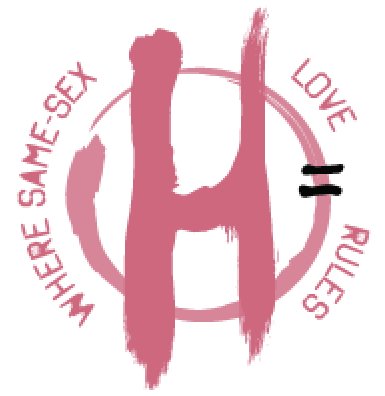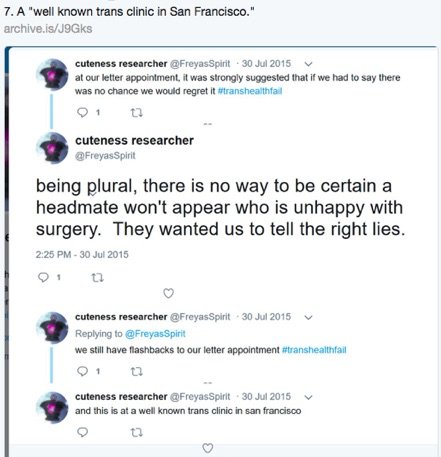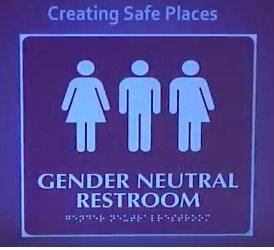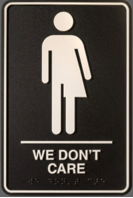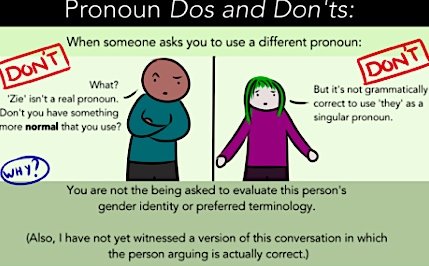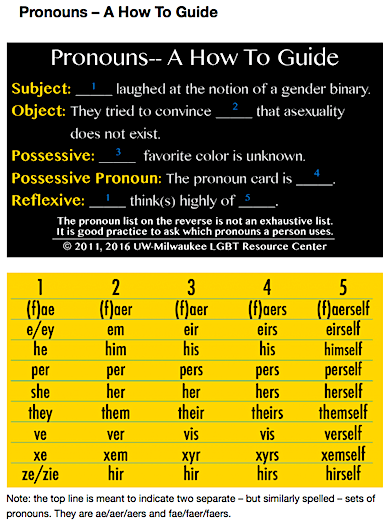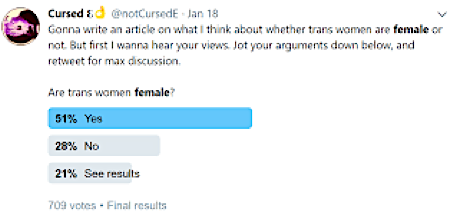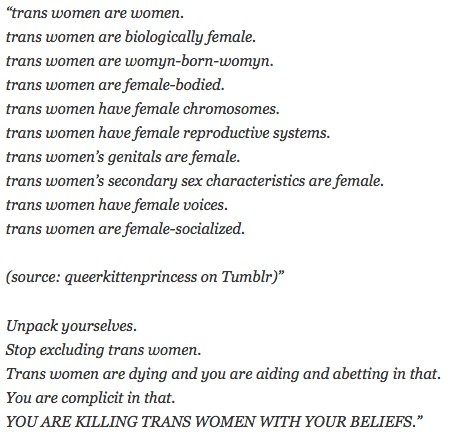Building a culture of validation & normalization for all outlying identities
It is important to consider how far enthusiastic societal support should go for the myriad of emerging new identities around gender or any other trait. Young people are now not only identifying as male, female or nonbinary, other identities such as “cake” or “frog” are now genders seeking validation. Recently a mental health screening model has been replaced by an informed consent model in the interest of validating trans people’ and making their lives easier. This makes sense for adult trans people who are certain transition is their best option and can make and informed decision, weighing the potential costs and benefits. However, this libertarian attitude is questionable when it comes to young people. The most recent WPATH SOC8 has entirely done away with age recommendations, except for phalloplasty. Adolescent girls as young as 14have had mastectomies and in some jurisdictions children as young as 16 can access cross sex hormones without parental consent.
The willingness by mental health and medical professionals to support any and all ways a person chooses to identify can be problematic.
In one extreme example doctors gave a transitioned MtF a drug called domperidone, so that the biological male could lactate and breastfeed a newborn.
Domperidone has been banned in the United States because of Food and Drug Administration concerns about its associations with cardiac arrest and sudden death.
The drug was prescribed off label and is considered dangerous. Further, the effect on the infant was not considered.
There are also plans for uterus transplant for transwomen so that they can have babies. Again, there seems to be no consideration for the health of the fetus.
Another example of using medical technology in the interest of supporting extreme demands are surgery for “plurals,” who are trans people who say they have multiple personalities. Their personalities may be multiple genders and may not all want to transition. More on that subject can be found here and here. This individual is getting support from a mainstream trans clinic.
Discussions about transitioning people who claim to have multiple personalities was discussed at the USPATH conference in Los Angeles in 2016 and the Gender Odyssey conference in Seattle in 2017 in a seminar called “Complicated Cases.” These cases are described as complicated because it is difficult to determine if one personality transitions whether the other personalities will be happy with that decision. A self-identified plural echoes the same concern and demonstrates their medical transition is being facilitated by a “well-known” San Francisco gender clinic.
Dan Karasic, a member of WPATH also claims himself he is not “phobic” about medically transitioning plurals. There is also an organized trans plural group at Google. This group has enough members that Google has circulated a survey in support of them.
One plural has elf personalities.
Doctors are also amputating male’s penises/testicles to support a “nullo” identity. These are people who hate their sex organs. Some identify as trans and some don’t. There is more about them here and here in a discussion about medical support for non-binary identities.
Doctors/mental health professionals also are blinding people and amputating people’s limbs due to a condition called body integrity disorder
Here is one research study on the subject:
So, the ideas that children should be taught that gender is whatever you feel it to be and that there can be “infinite numbers of genders” should be viewed in a wider context. Under this worldview there is no reason school educators and administrators should not support plural identification and nullo identification, since they fall under the trans umbrella. These identities are supported at the same gender conferences that involve gender ideology educators (such as WPATH and Gender Odyssey). There is no long-term data studying if this approach is healthy in the long-term for people who claim multiple personalities, people on the autism spectrum, or for gender nonconforming children/teens/young adults who may be at risk for over-medicalization of their psychological issues.
To take this to a real life reductio ad absurdum example, there is an employee at Google who claims their sexual identify is as an architectural structure. See: “Google criticised for talk by worker ‘who sexually identifies as an ornate building.” Why is this different from calling oneself a “no-gender,” when humans are s sexually dimorphic species, separated by an X or Y chromosome, with rare intersex anomalies.
Intense fixation on bathroom use as societal identity endorsement
There has been a major focus in trans activism on bathroom use. There are actual legitimate issues around using bathrooms as a trans person. Both trans people and gender nonconforming people may get harassed in bathrooms. But trans activism has more recently focused on bathrooms as a means of identity validation. There are dozens of articles available, written in liberal media, about the importance of not just allowing trans people to access the bathroom that aligns with the gender they feel comfortable living in, but for providing gender neutral toilets so as not to exacerbate the gender dysphoria of non-binary people.
A focus on bathrooms is often promoted at gender conferences. In a presentation given by Dr. Jane Hastings, she emphasizes the need to provide gender neutral bathrooms, so that male and female designated bathrooms do not emotionally trigger genderfluid and non-binary identities, “the sporks in a spoon/fork world.”
But this just highlights like, what do you do to fit into one of the bathroom stalls…
But here now I have a place where I feel comfortable. The bathroom is so important. We all need to pee and sometimes poop.
The sign below demonstrates the fact that many institutions and other public places are embracing non-binary bathroom activism. Public school systems are being pressured to convert bathrooms to gender neutral bathrooms, even if it takes public funds to remodel them for individual stalls. It is always the women’s bathrooms that get dedicated to gender neutral use, with many places having 1 men’s bathroom and one for “all gender.” There appears to be no real consideration for the feelings and needs of women and girls.
Trans women are adamant that they need to access women’s restrooms and locker rooms for their own safety so they are not assaulted or harassed in men’s restrooms, indicating men’s restrooms can be dangerous places. But it seems that the intense desire for an increasing number of females not to identify as females is now putting them at risk for dangerous situations men’s bathrooms.
This article “IT HAPPENED TO ME: I'm a Nonbinary Trans Person, And I Was Sexually Harassed When I Used the Men's Bathroom” provides an account of a non-binary female, too feminine appearing to pass as male, getting sexually harassed in a male bathroom.
"You want to suck my d***?" His voice was shaking from trying to hold back a laugh.
I looked his way, astonished. Who was he and why was he making a remark like that, especially to a complete stranger?
Like a fool, I looked around, making sure he wasn't talking to someone else that perhaps I hadn't noticed. Then I asked, "What?"
"You're in the men's restroom, so you must be a prostitute," he said. "I'll give you $5 to suck my d***."
The nerve of this man.
But more than anything, the nerves I had. Because in that moment, I wanted to run. Yet my feet wouldn't move. I was frozen in fear, my heart beating a million miles an hour, and I couldn't do anything but stand there.
Was this man going to attack me? Was he going to rape me? Or was he just going to stand there and bully me?
This incident validates this parent’s concern for her trans identified female tween, when she walked into a men’s restroom at a public park.
I angrily lectured her on the dangers of men’s public restrooms, especially when, to all appearances, you are a 14-year-old girl. She accused me of not affirming her identity. I said I didn’t give a damn about her identity when her safety was at risk.
Another non-binary identified teenage female, whose appearance was that of a regular girl, insisted on using the boy’s bathroom at high school, despite the fact that the faculty had offered a faculty gender neutral bathroom. The femininely dressed student was mocked by boys on social media and it caused controversy at the school. While this was an incident of mild teasing, the safety of having females in boy’s bathrooms is questionable.
Although, this focus on bathrooms is often reinforced in gender identity trainings, not everyone views the current preoccupation with bathrooms among trans and genderqueer youth as a positive development that is encouraging an adaptive and mentally healthy way to live life. The below screen capture is a response to one of the comments on one of Lore’s articles, the non-binary female discussed previously. Many genderqueer young people are having struggles with bathroom use, not out of fear for their physical and emotional safety regarding treatment by the general public, which is understandable. They are having struggles with bathroom use because of either identity confusion or an intense need for personal validation. This is a new phenomenon and increasingly common.
One trans woman come out against “gender diverse bathrooms,”
Transsexuals, who aren’t really gender-diverse, have been around since the 1960s (perhaps even before then), using the restrooms of their presenting gender. They generally mind their own business in male/female/disabled facilities that already exist, and this has always been the case. As a transwoman myself, I have been using female facilities for almost 10 years, and to this day I still generally avoid making eye contact with other women I pass by, let alone start conversations. Here, I’m only interested in going in to do whatever it is that I need to do, then leave, just like the other women passing by.
There has never been an issue for me and the other women using the female facilities from what I can tell. There has never really been a need for gender diversity signs around restrooms, and there’s no need for it now. Such signs won’t change the fact that some people are cruel and nasty, and they’re everywhere, including restrooms. The trans can of worms was always there, harmless if unopened. It just doesn’t need to be opened to gender-diversify...
Identity is a product of social negotiation, not merely self-determination as purported by such signs
Neo pronouns and pronoun etiquette: respectful acknowledgement of people who are different or a promotion of neurosis & attention seeking?
Like bathroom use, there is a lot of focus around pronoun use in Western countries. This is causing conflict. If this were simply a matter of being nice and respectful to trans people, who have medically transitioned, and are living life as the opposite-sex as best they can, this issue likely would not be stirring up as much controversy as it is. The issue has become more complicated due to government enforced pronoun use, free speech issues, the now dozens of “different genders,” and pronouns that go with them. The concept of “genderfluidity” means you can be male, decide you want to present as male, but still identify as a “she.”Or your gender identity can change day to day, even or moment to moment.
Here are just some alternative pronouns used by trans and non-binary people. There are others.
Pronoun use has become a very important part of trans and genderqueer activism.
New Identities are marketable:
This non-binary person who uses ze/hir pronouns, has this to say about the importance of pronouns to trans/genderqueer activism.
Queering language is really important to me.when I first came out as genderqueer in the early 2000’s I learned about non-binary pronouns, and right away began using “ze/hir” as my pronouns. These were the same pronouns gender outlaw Kate Bornstein, transgender activist Leslie Feinberg, and so many other genderqueer folks I met were using to reflect our non-binary identities.
Intense social rules implemented in trans/genderqueer spaces have now moved into general society in order to make them the norm everywhere. Here are instructions given to the general public:
10 Tips About Using & Understanding Non-Binary or Genderqueer Pronouns:
1) Normalize Pronouns - A great way to do this is including your pronouns in email signatures or on social media bios. This helps to normalize the idea that people shouldn’t just assume they can tell someone’s pronoun based on a the traditional gendering of a name.
2) Ask - Ask everyone their pronouns, not just the person you think might be trans or non-binary. Make asking pronouns as natural as asking what someone’s name is when you meet.
3) Effort - The only way to get better at using non-binary pronouns is to step outside of your comfort zones. Forget what you think you know about grammar, and make an effort to respect our identities by using non-binary pronouns.4) Practice- A rainbow of gender-neutral pronouns have been part of my regular spoken and written vocabulary for sixteen years. Using them is as natural to me as binary pronouns, but that didn’t happen overnight. The only way to not get flustered using non-binary pronouns is to practice, practice, practice!
5) Don’t assume- You can’t tell a person’s gender identity or pronouns based on how they look. Gender presentation isn’t the same as gender identity, and neither presentation nor identity are a indicator of what pronouns someone uses. The only way to know what someone’s pronouns are is to ask. Also, don’t assume that someone’s pronouns are fixed. Gender is fluid, and their pronouns may (or may not) change over time.
6) Include pronouns- Include PGP - Preferred Gender Pronoun or Personal Gender Pronoun (the latter being the most inclusive phrasing as doesn’t insinuate respecting someone’s pronouns is optional) in your ice breakers/go-arounds when you start a meeting. Are you involved with organizing a conference? Include a place for pronouns on your name tags/badges. You can even buy pre-made pronoun stickers
7) Apologize- Mistakes happen. When you misgender someone say you are sorry, and fix your language moving forward. Don’t make a huge deal about your mistake and force the trans/non-binary/genderqueer person spend a lot of time and energy consoling you for misgendering them. The best apology is not doing it again.
8) Non-binary greetings: Instead of saying “ladies” or “guys” to a group of people try to incorporate language that isn’t gendered like “folks,” “y’all,” “friends” etc. into your vocabulary
9) Correct - When you hear someone use the wrong pronouns for a mutual friend correct them. Sadly, sometimes the only way to get people to respect non-binary pronouns is if they feel socially shamed into doing so. Part of being a good ally to non-binary, genderqueer, and trans people in your community is helping other people get our pronouns right.
10) One size doesn’t fit all - As people become more comfortable and familiar with using the non-binary pronoun “they” I’ve noticed a trend that people will use it as a default pronoun for any non-binary person. “They” is an awesome pronoun, but it’s not mine. I feel just as misgendered by people referring to me as “they” as I do when they use “he” or “she.””
This focus on pronouns is having an effect on the culture. Some churches are promoting pronoun culture.
Pronoun enforcement is being adopted by colleges with colleges beginning to make it official policy, turning mis-gendering into a “fireable offence.”
In the interests of respecting how people self-identify, some meetings, conferences, and other events are having pronoun check-ins before discussions take place and using pronoun name tags, even if it is not a gender conference. Schools are told not to refer to students at all girls schools as “girls” because it may trigger females questioning their gender. Sweden has removed he and she in preschools in favor of a gender-neutral term. Some school board in Canada are also considering not using gendered pronouns in favour of “they/them”.
One of the goals of the current trans/genderqueer movement is to normalize these pronouns throughout the culture and enforce their use by law. Misgendering a person in New York city now carries a six figure fine. Here is an explanation of this law:
For instance, an individual who simply mistakenly uses the wrong pronoun when referring to a transgender individual will not be fined under the new law. However, a person who intentionally and repeatedly refuses to use an individual’s preferred pronoun would be subject to fines (that could reach as high as $250,000 for multiple violations) under the law:
BillC16 in Canada, similarly aims to legally enforce pronoun use. Individuals could be charged with a hate crime, with possible jail time for refusing to pay fines for misgendering (not everyone believes in this). This would include protections for all gender identities, of which there are now dozens. This has caused a lot of controversy in Canada with some Canadians arguing people won’t “go to jail” for pronoun use. This is likely incorrect in some hypothetical scenarios. They make that argument in regards to accidental misgendering; however, refusal to use third gender pronouns repeatedly, could fall under legal punishment. There are gay people, feminists, moderates, conservatives, and leftists who have arguments against forced pronoun use, who’s opinions are not considered under this law.
Canada further complicates matters as anyone is allowed to self ID and others must respect this identity. This includes in the context of criminal offences. Given this, the reality is that female guards are now being forced to do body searches on extremely violent MtFs:
Prison officials have made no comment on Scott’s behavior, but command staff to comply with Scott’s demands. Female prison staffers performed one strip-search on Scott before refusing and staging a protest.
In health care settings, female nurses are allegedly being forced to perform “cervical smears” on MtFs who don’t actually have a cervix:
The public should not assume other opinions about pronoun usage will be forgiven when applying hate speech law and potential fines. Those cases were in Britain but the aims of current trans activism are consistent across different countries.
You seem to link pronoun usage, including those non-standard pronouns, with the advancement of civil rights. While you stated several times that the legislation does not have criminal consequences for misgendering someone, you do not refute Peterson’s concern regarding fines and potential jail time for not paying the fines.
Many people do not believe they should be forced to use pronouns such as zir, it, “jamself”, or any other of the many pronouns from the above list. For example, one college student on a campus with this policy demanded to be called “his Majesty” to make this point. Others believe they should not be forced by the government to affirm someone’s identity. One reason people take issue with forced pronoun use is that they are required even if a person demanding these pronouns has made no effort to pass, such as this person…
…or was demanding other people use pronouns such a they/them, zir, or it. More on that subject here.
In all of these cases, these laws compel speech. Britain and Canada are different but the U.S. Constitution protects free speech, opening up the NY law to challenge.
How practical is it to enforce the use of pronouns to support a myriad of gender identities?
The below quote raises many questions. It is a response of a non-binary identified biological female, addressed to a college professor in Canada who refuses to use gender neutral pronouns on the grounds of free speech and not supporting a cultural obsession, in his view, with identity politics.
I’d like to encourage people struggling with this to be kind as their first impulse. You know, we call somebody what they want to be called in our society for instance, I don’t call somebody Julie if they prefer to be called Autumn. That’s just basic human courtesy. Here is a great little tip for people who are despairing at the possibility of remembering some, of all those pronouns. What I do is just program in the pronoun next to the person’s name in my smart phone. So, whenever I am out and about and I’ve forgotten whether one my friend uses ze or zir or they or them or something else, I just look it up. It’s really super easy…He could get over learning to program a few pronouns into his phone…By the way I only have ½ a dozen or so that I actually use on a daily basis.So, it’s not all that difficult.
This is a person who identifies as trans/genderqueer, is ensconced in the trans community, and is involved with trans politics. So, it is pertinent to note that this person has difficulty keeping track of the myriad of pronouns of this person’s own friends without programing them into a cell phone. In the above example of Lore, Lore’s own pronouns have changed multiple times. College professors as well as educators of children and teens may often address hundreds of people a day. Many do not feel third gender pronouns are practical for even getting through an educational day efficiently.
Affirmative model advocates support a myriad of pronouns. This blog post, by a therapist who counsels LGB and T youth, mentions a product marketed to young people so that they can wear different color bracelets for different genders they may identify with on different days. This is so that others will not misgender them.
Below is another example of a public or private entity enforcing a culture of pronoun accommodation, in this case for trans plurals at Google. This was part of their statement of support and a survey for trans plurals (trans people who have headmates/multiple identities)
Here are parents raising their children with no pronouns.
Some experts, including Steever, say it’s unlikely that children would be confused by a gender-open upbringing. Brown, though, said it’s important for parents to prepare children for “a society that's really obsessed with a gender binary.”
Why would Steever believe that? More teens and young adults feel confused about their gender then ever before.
A parent comments on a negative aspect of that reality:
Another parent offered, “If they aren't mocking ‘cis’ people, they are playing pronoun police and mocking people who can't get the pronouns correct.” Another participant said, “New vocabulary includes ‘cis-stupid’ and ‘cis-stupidity.’” And a fourth participant described, “They assume anyone that is critical about being transgender (even just asking questions) is either ignorant or filled with hate.”
Gender nonconformity or gender dysphoria aren’t new, but biological females feeling physically ill over the lack of a third gender pronoun is something that has only emerged recently.
Every time that I look at my identity markers or have to produce them for something, I feel like I'm showing a lie. It's not who I am and it's somebody else," said MacKinnon, a non-binary transgender person who was assigned female at birth.
"That feeling, it's terrible — like, it makes me want to vomit. It feels like somebody is judging me and deciding for me who they think I am, and it's totally wrong because it's not who I am.
Paul Vasey, university professor and Associate Editor of Archives of Sexual Behavior, has studied gender nonconforming people in different cultures:
There are some who are accepting of gender nonconforming males and support their “third gender” identity such as the fa'afafine of Samoa or the muxe of the Istmo Zapotec. They do not see themselves as literally female, do not need alternative pronouns, and rarely medically transition. -
Many mental health professionals are enthusiastically reinforcing multiple gender pronoun culture, with scant discussion as to why this is happening, and no data on whether or not encouraging dis-identifying with any gender is mentally healthy and adaptive in the long-term.
Schools and other public and private entities instituting pronoun use policies should consider the practicality of this in settings with large numbers of people from various backgrounds. There are also issues of freedom of speech and thought involved. Other civil rights movements in the past for black people, women, or homosexuals, did not require validation for subjective feelings and forced speech. It is also important to analyze if it is truly providing a healthier culture and better emotional functioning of gender nonconforming young people in the long-term.
It sounds validating and supportive to address people by whatever they are demanding or even just asking politely. However, many people, including some trans and gender dysphoric people, don’t agree as will be discussed in the conclusion of this section below.
Belief that trans people are literally the opposite sex is causing conflict with those who believe the trans experience differs from that of males & females who are not trans
For the most part, people who started medically transitioning in the twentieth century viewed themselves as a gender variant male or female. Current trans activism has sought to redefine male and female, form biological terms to one of a person’s innate gender identity and how much a person’s expression is stereotypically masculine of feminine. In other words, the belief is transwomen are literally women and transmen are literally men. The belief that if a person does not believe a MtF is literally female, they are a bigot, or “perpetrating violence” on trans people. The below example from a trans site Tumblr is fairly typical.
More examples below:
Enforcement of the belief that transmen are men and transwomen are women is important to discuss. It causes some conflicts with people who are not trans, even among those who were previously extremely supportive of trans rights and trans inclusion. There are also trans people who disagree with the statement that “we are literally the opposite sex” question whether this is and beneficial.
There are problems created by redefining male and female based on self-perception, gender dysphoria, and how stereotypical a person’s interest and gender expression are. Some examples of issues that are creating conflicts include biological males competing against women in sports and the intense effort among trans activists and many liberal feminists to ban women from talking about their gender in terms of their reproductive biology. These conflicts are increasingly reaching levels that can be considered noxious. Some examples are provided.
There were two incidences were women were hounded, scolded, called bigots and accused of causing trans women’s deaths because these women talked about their bodies. One involved cupcakes decorated with female parts at an event put on by the Auckland University Students Association for a women’s event. The women were called “transmisogynists,” accused of participating in participating in “c***feminism,” and forced to apologize for linking female body parts to women’s event. There were actually events for trans women during the festival.
In another incident where women wanted to celebrate female body parts to resist “taboos” against them, were attacked as bigots and again “transmisogynists.” This incident happened at Scripps College in Claremont California.
“[T]his entire event is so incredibly violent to trans women specifically. I’m so disgusted,” said Facebook user Kasie Butler
The wording of this event excludes trans women, and further normalizes transmisogyny and violence against trans women,” added Simone Rae Charles-Isosceles, who dismissed the whole affair as a “garbage, cis, white event.”
“Whether or not cisgender people view this as an act of violence towards trans women is irrelevant. Multiple trans women have expressed that this event is an act of violence towards them, and it’s extremely concerning to me that while they are being acknowledged, they are not being listened to.”
The event organizers were forced to atone. Women cannot discuss reproductive biology or talk about their sex organs in any events like this or this is sure to happen.
The outrage grew strong enough that an apology was issued by The Motley Coffeehouse, which hosted the event and describes itself as an “intersectional, political, and feminist business.” The coffeehouse said it was working hard to atone for its error and overcome its “herstory” (rather than “history”) of privilege.
“The Vagina Monologues,” a play exploring female identity and struggles and celebrating the female body is being banned across college campuses because the writer did not include MtFs in the stories.
“At its core, the show offers an extremely narrow perspective on what it means to be a woman,” Murphy explained, according to Campus Reform.
“Gender is a wide and varied experience,” Murphy continued, “one that cannot simply be reduced to biological or anatomical distinctions, and many of us who have participated in the show have grown increasingly uncomfortable presenting material that is inherently reductionist and exclusive.”
Here UCLA apologizes for saying women menstruate. Sadly, this is becoming the norm.
Editor’s note: This blog post refers to individuals who menstruate as women because the author wanted to highlight gender inequality in health care. We acknowledge that not all individuals who menstruate identify as women and that not all individuals who identify as women menstruate, but feel this generalization is appropriate considering the gendered nature of most health care policies.
Below is a blogpost regarding the use of the word vagina being replaced by front hole so as not to trigger the gender dysphoria of FtMs and non-binary people. This is relevant because it is a health website. Terms like front hole being used to replace the word vagina is going mainstream. The writer’s view of this change is not positive. There is no consideration to how women and girls feel about the word vagina being replaced by front hole.
Healthline has decided that the word "vagina" is too triggering for trans people and so they will now use the term "front hole" in their sex education materials. No, really. Please keep in mind that these are the same people who for years have told us that toddlers need anatomically correct vocabularies in order to be properly aware of body parts, lest they become victims of sexual abuse.
In case you were wondering, Healthline went into great, confusing detail about why such a LGBTQWTF-sensitive sex education guide is needed. The enlightened staff at Healthline say that the old sex ed guides "unnecessarily gender body parts as being 'male parts' and 'female parts' and refer to 'sex with women' or 'sex with men,' excluding those who identify as nonbinary."
This language policing and replacement and banning of art is almost completely absent is places where men and male health are discussed and products for men sold. It’s almost exclusively applied to discussions of female biology, female health, and female equality rights. There are no similar bans on use of the word penis or prostates or discouragement of talking about the male body in terms of male issues. Societies focus is almost solely targeted at making women’s language inclusive with no interest in making men’s language inclusive for trans or nonbinary identified people.
For the most part, people who started medically transitioning in the twentieth century viewed themselves as a gender variant male or female. Current trans activism has sought to redefine male and female, form biological terms to one of a person’s innate gender identity and how much a person’s expression is stereotypically masculine of feminine. In other words, the belief is transwomen are literally women and transmen are literally men. The belief that if a person does not believe a MtF is literally female, they are a bigot, or “perpetrating violence” on trans people. The below example from a trans site Tumblr is fairly typical.
More examples below:
Enforcement of the belief that transmen are men and transwomen are women is important to discuss. It causes some conflicts with people who are not trans, even among those who were previously extremely supportive of trans rights and trans inclusion. There are also trans people who disagree with the statement that “we are literally the opposite sex” question whether this is and beneficial.
There are problems created by redefining male and female based on self-perception, gender dysphoria, and how stereotypical a person’s interest and gender expression are. Some examples of issues that are creating conflicts include biological males competing against women in sports and the intense effort among trans activists and many liberal feminists to ban women from talking about their gender in terms of their reproductive biology. These conflicts are increasingly reaching levels that can be considered noxious. Some examples are provided.
There were two incidences were women were hounded, scolded, called bigots and accused of causing trans women’s deaths because these women talked about their bodies. One involved cupcakes decorated with female parts at an event put on by the Auckland University Students Association for a women’s event. The women were called “transmisogynists,” accused of participating in participating in “c***feminism,” and forced to apologize for linking female body parts to women’s event. There were actually events for trans women during the festival.
In another incident where women wanted to celebrate female body parts to resist “taboos” against them, were attacked as bigots and again “transmisogynists.” This incident happened at Scripps College in Claremont California.
“[T]his entire event is so incredibly violent to trans women specifically. I’m so disgusted,” said Facebook user Kasie Butler
The wording of this event excludes trans women, and further normalizes transmisogyny and violence against trans women,” added Simone Rae Charles-Isosceles, who dismissed the whole affair as a “garbage, cis, white event.”
“Whether or not cisgender people view this as an act of violence towards trans women is irrelevant. Multiple trans women have expressed that this event is an act of violence towards them, and it’s extremely concerning to me that while they are being acknowledged, they are not being listened to.”
The event organizers were forced to atone. Women cannot discuss reproductive biology or talk about their sex organs in any events like this or this is sure to happen.
The outrage grew strong enough that an apology was issued by The Motley Coffeehouse, which hosted the event and describes itself as an “intersectional, political, and feminist business.” The coffeehouse said it was working hard to atone for its error and overcome its “herstory” (rather than “history”) of privilege.
“The Vagina Monologues,” a play exploring female identity and struggles and celebrating the female body is being banned across college campuses because the writer did not include MtFs in the stories.
“At its core, the show offers an extremely narrow perspective on what it means to be a woman,” Murphy explained, according to Campus Reform.
“Gender is a wide and varied experience,” Murphy continued, “one that cannot simply be reduced to biological or anatomical distinctions, and many of us who have participated in the show have grown increasingly uncomfortable presenting material that is inherently reductionist and exclusive.”
Here UCLA apologizes for saying women menstruate. Sadly, this is becoming the norm.
Editor’s note: This blog post refers to individuals who menstruate as women because the author wanted to highlight gender inequality in health care. We acknowledge that not all individuals who menstruate identify as women and that not all individuals who identify as women menstruate, but feel this generalization is appropriate considering the gendered nature of most health care policies.
Below is a blogpost regarding the use of the word vagina being replaced by front hole so as not to trigger the gender dysphoria of FtMs and non-binary people. This is relevant because it is a health website. Terms like front hole being used to replace the word vagina is going mainstream. The writer’s view of this change is not positive. There is no consideration to how women and girls feel about the word vagina being replaced by front hole.
Healthline has decided that the word "vagina" is too triggering for trans people and so they will now use the term "front hole" in their sex education materials. No, really. Please keep in mind that these are the same people who for years have told us that toddlers need anatomically correct vocabularies in order to be properly aware of body parts, lest they become victims of sexual abuse.
In case you were wondering, Healthline went into great, confusing detail about why such a LGBTQWTF-sensitive sex education guide is needed. The enlightened staff at Healthline say that the old sex ed guides "unnecessarily gender body parts as being 'male parts' and 'female parts' and refer to 'sex with women' or 'sex with men,' excluding those who identify as nonbinary."
This language policing and replacement and banning of art is almost completely absent is places where men and male health are discussed and products for men sold. It’s almost exclusively applied to discussions of female biology, female health, and female equality rights. There are no similar bans on use of the word penis or prostates or discouragement of talking about the male body in terms of male issues. Societies focus is almost solely targeted at making women’s language inclusive with no interest in making men’s language inclusive for trans or nonbinary identified people.
The insistence on there not being any difference between MtFs and women has spilled over into areas of the deepest personal privacy.
A trans woman in Canada insisted on becoming a rape crisis counselor and sued when the rape crises center refused, wanting to have biological females counsel women who had been the victims of sexual assault. Later, a small candy shop business put a poster up unrelated to the dispute that merely advertised the rape crises center’s services to women who are victims of sexual assault. A campaign was implemented by trans activist to downvote the business in online reviews to punish them.
An MtF has been suing multiple women for refusing to wax male genitalia. Screen captures involving the person online saying sexually suggestive things about tween girls, tampon, and women in female only spaces came to light. Wordpress and Twitter both banned women from speaking about this person as a man. This is despite what looked like sexually disturbed behavior. Language enforcement is not only being implemented by the NYC and Canadian government but by social media companies. More on that story can be found here, here, and here.
This article, written by a trans woman seeking placement on a football team, indicates that any discussion around the fact that trans women and women have differing biology that affects issues relating to women are responsible for trans people poor mental health and even trans suicides
Every negative comment in the media, whether directed towards a specific person or not, is incredibly harmful to the entire trans community. And this isn’t just restricted to those of us of an age where we can engage thoughtfully with the media; it’s the message it sends to trans kids that is truly damaging. They largely don’t have the ability to recognise who is or isn’t worth listening too; instead they take it all in like a sponge and absorb every negative comment they might come across.
These are the types of situations being created for biological females who now must compete against biological trans-identifying men. Little consideration is given to the safety of biological females.
A list of women being beaten by trans identifying males in sports can be found here. Promoting the idea that trans women are literally women is having an impact on women. This makes trans activism very different than women’s suffrage, Black or gay rights activism. Women simply can’t object to this publicly without vicious harassment and punitive measures such as their endorsements being pulled because controversy may have a negative impact on their business.
It is seeping into the legal system with laws to enforce pronoun usage and in stories of judges like this “Judge: Gender Laws Are at Odds With Science” who without any evidence states that sex is on a spectrum.
This physiological truth is unrelated to whether someone is straight, gay or transgender. Many individuals are born with sex chromosome, endocrine or hormonal irregularities, and their birth certificates are inaccurate because in the United States birth records are not designed to allow doctors to designate an ambiguous sex. Countless people likely have no idea that they fall into this group. The more we learn about our DNA, the more that biological sex — from the moment of conception — looks like an intricate continuum and less like two tidy boxes. This understanding makes it virtually impossible for judges to consistently apply a law that permits or prohibits conduct based on whether someone is a man or a woman.
Not all trans people hold these beliefs or have the desire to punish others who may disagree. However, these opinions are actually the norm in “queer” and liberal communities online, particularly among young people. These are not extreme examples in these environments. And while gender conferences and activists doing gender trainings in schools and other institutions may not support these extreme beliefs, they are promoting the worldview that gender is what you say it is and is gender is a spectrum. These world views have implications for society at large and go beyond being accepting of transgender individuals. In gender trainings and conferences there is clearly a dogma that is strictly adhered to and language and attitudes are heavily policed in support of new gender identify ideology.
A good summation of how this impacts women’s right can be found in this article, “Changing the concept of “woman” will cause unintended harms.”
© Gender Health Query, 6/1/2019
Continue to Part 3: An attitude of entitlement to emotional and sexual access to others based on gender identity
Contents
12) Cultural ripple effects (part 2)
-Building a culture of validation & normalization for all outlying identities
-Intense fixation on bathroom use as societal identity endorsement
-Pronoun diversity etiquette, respectful acknowledgement of people who are different or a promotion of an unhealthy obsession with identity politics?
-Belief that trans people are literally the opposite sex is causing conflict
BACK TO OUTLINE
More
1. Do Children Outgrow Gender Dysphoria?
3. Are children & teens old enough to give consent?
4. Comments safety / desistance unknown
5. Gender dysphoria affirmative model
6. Minors transitioned without any psychological assessments
8. Regret rates & long term mental health
11. Why are so many females coming out as trans / nonbinary?
13. Why is gender ideology being prioritized in educational settings?
14. Problems with a politicized climate (censorship, etc)
